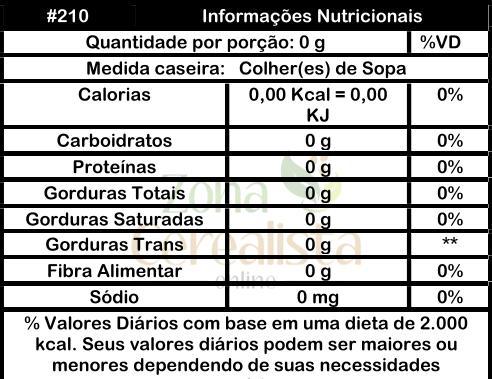
Il rosemary (Salvia rosmarinus) is a aromatic plant which belongs to the Lamiaceae family and to the Salvia genus. Until recently it was known by the name of Rosmarinus officinalis, however, given the characteristics similar to those of the sage, to date officially falls into the same family.
In addition to its unmistakable aroma, rosemary is also rich in beneficial properties for health. Let's find out better.
- What is rosemary
- Properties and benefits of rosemary
- Contraindications of rosemary
- Calories and nutritional values of rosemary
- Use in the kitchen
- How to grow rosemary
What is rosemary
Rosemary is one evergreen shrubby aromatic plant belonging to the Lamiaceae family and to the Salvia genus.
Presents woody stems of brown color, leathery leaves and needle-like with a length of about 2-3 cm e blue-purplish flowers. There are several variety of rosemary, including white-flowered rosemary.
It is mainly used as aromatic herb in the kitchen, but it is also one of medicinal plants best known all over the world for its valuable beneficial properties for health.
Properties and benefits of rosemary
In case of spices or herbs, you need to take that into account their dietary intake is very minimal, therefore, in order to benefit from their properties to the full, it could be useful to resort to an integration, for example through essential oils, consisting of the main components of the plant.
THEessential oil of rosemary has significant health benefits. Let's see some of them:
- It improves concentration, memory and, in general, the brain function.
- Promotes dilation of blood vessels and the circulation.
- Gets better inflammation and joint pains.
- It has properties antioxidants and anticancer agents.
- Favors the digestion and liver function.
- Counteract the loss of hair and promotes its growth.
- It reduces it STRESS.
You can learn more about the properties of rosemary essential oil
Contraindications of rosemary
The consumption of rosemary as a medicinal plant it has no particular contraindicationsHowever, before resorting to using essential oil or supplements, you should consult your doctor in case of pregnancy, breastfeeding, hypertension or use of anticoagulant drugs.
Calories and nutritional values of rosemary
100 g of fresh rosemary provide:
- 96 kcal
- G carbohydrates 13,5
- Sugars 13,5 g
- 1,4 g protein
Use in the kitchen
This aromatic plant is irreplaceable in the kitchen, especially in the Mediterranean diet. Unmissable on meat, fish, in the preparation of sauces and marinades.
Le leaves of rosemary, fresh or dried, they come added to many dishes such as roasts, dips, potato-based dishes and rustic pies, or on bread and focaccia.
I sprigs of rosemary, in addition, they are used together with garlic for aromatize olive oil and vinegar with excellent results. Its use makes foods not only tastier, but also more digestible.
Also rosemary flowers they are edible and are often used to flavor and garnish salads.
You can also prepare a infusion of rosemary which is excellent, for example, in case of digestive difficulties.
How to grow rosemary
This evergreen shrub is resistant to both cold and hot temperatures. This means that growing rosemary is very simple and you can also do it on the terrace.
For the cultivation of various types of rosemary you can start from the seeds, from the cuttings or simply buying a young seedling to be transplanted into a suitable pot. It will be enough to expose it to the sun and moisturize it when the soil is dry.
However, for avoid any diseases of rosemary, it is important to ensure the right brightness, to avoid excessive irrigation and fertilization and to protect it with a cloth in case of frost.
READ MORE
The properties and use of rosemary mother tincture
Other articles on rosemary:
-
Hops and rosemary: natural remedies for cellulite
-
The benefits of rosemary essential oil
-
Rosemary infusion, properties and benefits
Bibliography and sources
Antioxidant activity of rosemary (Rosmarinus officinalis L.) essential oil and its hepatoprotective potential, BMC Complementary Medicine and Therapies
Chemical composition, anti-biofilm activity and potential cytotoxic effect on cancer cells of Rosmarinus officinalis L. essential oil from Tunisia, Lipids in Health and Disease
The Effects of Aromatherapy Massage and Reflexology on Pain and Fatigue in Patients with Rheumatoid Arthritis: A Randomized Controlled Trial, Pain management nursing
Rosmarinus officinalis L.: an update review of its phytochemistry and biological activity, Future Science
Cardiovascular effects of 1,8-cineole, a terpenoid oxide present in many plant essential oils, in normotensive rats, Canadian Journal of Physiology and Pharmacology
Smelling lavender and rosemary increases free radical scavenging activity and decreases cortisol level in saliva, Psychiatry Research
Finger pulse volume as a measure of anxiety in response to evaluative threat, Phsycophysiology
Promotion of hair growth by Rosmarinus officinalis leaf extract, Phytotherapy research
Effects of inhaled rosemary oil on subjective feelings and activities of the nervous system, Scientia pharmaceutica
Food composition tables, CREA


























